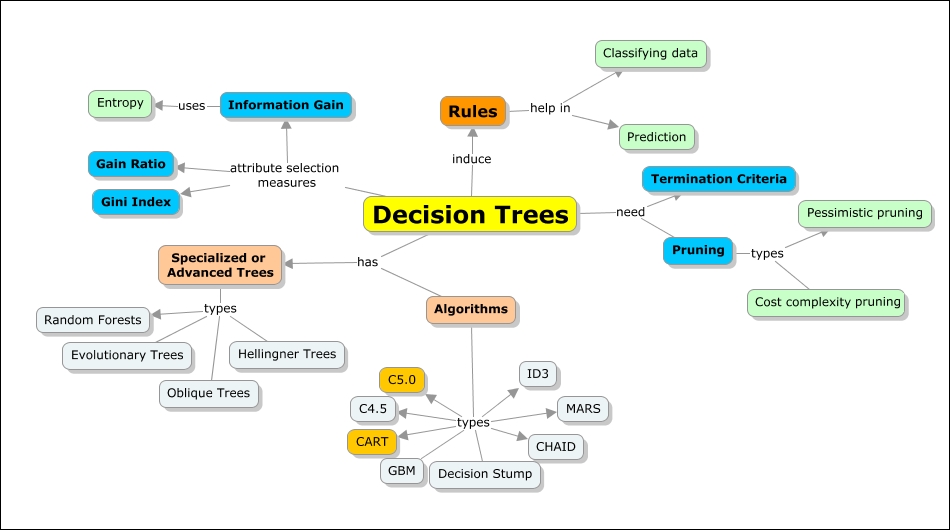Decision trees
Decision trees are known to be one of the most powerful and widely used modeling techniques in the field of Machine learning.
Decision trees naturally induce rules that can be used in data classification and prediction. Following is an example of a rule definition derived from building a Decision tree:
If (laptop model is x) and (manufactured by y) and (is z years old) and (with some owners being k) then (the battery life is n hours).
When closely observed, these rules are expressed in simple, human readable, and comprehensible formats. Additionally, these rules can be stored for later reference in a data store. The following concept map depicts various characteristics and attributes of Decision trees that will be covered in the following sections.

Terminology
Decision trees classify instances by representing in a tree structure starting from the root to a leaf. Most importantly, at a high level, there are two representations of a Decision tree—a node and an arc that connects nodes...































































